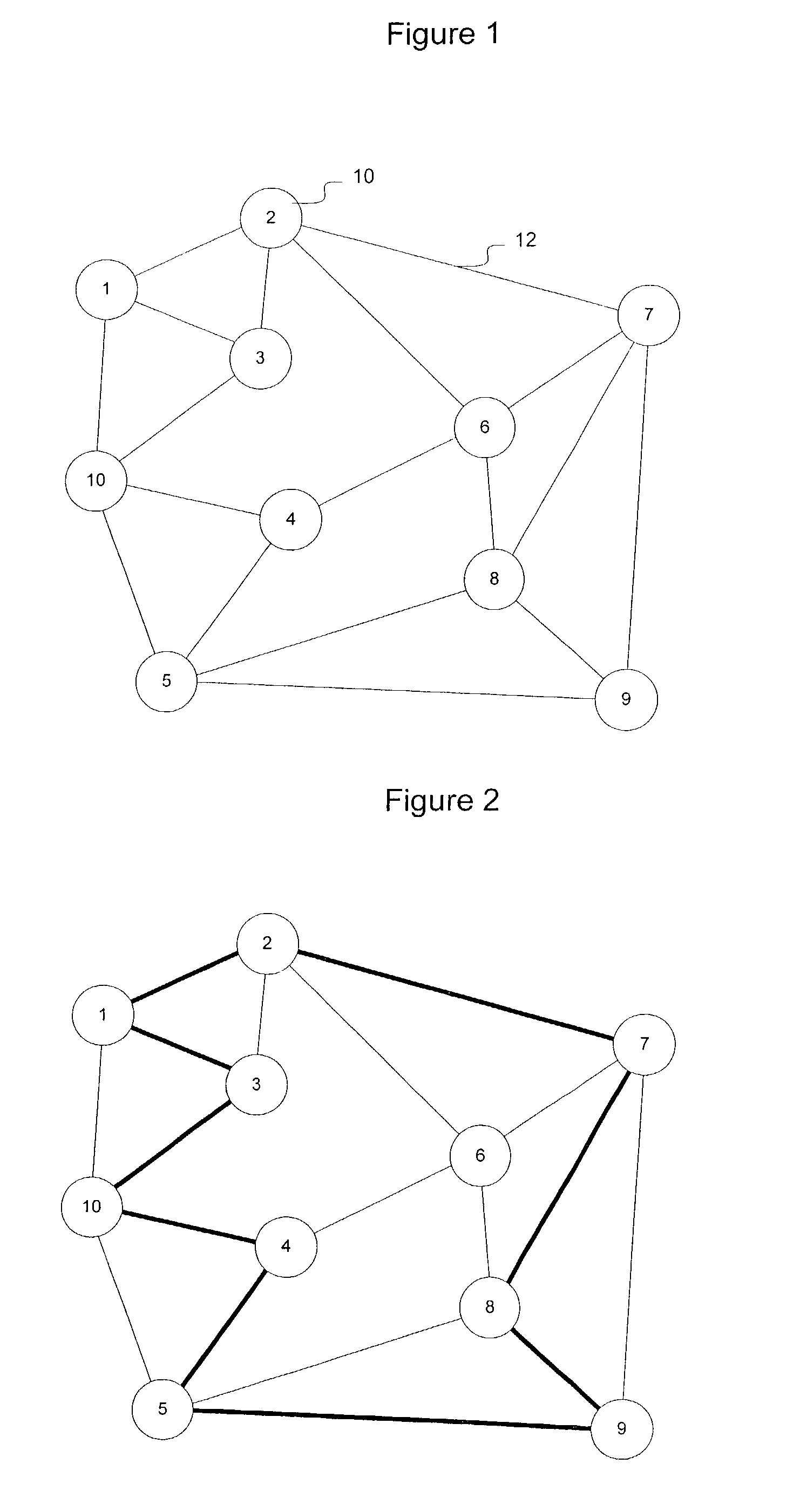Cycle-based restoration in mesh networks utilizing bandwidth and flow considerations
a mesh network and cycle-based technology, applied in the field of mesh networks, to achieve the effect of enhancing restorability in the network
- Summary
- Abstract
- Description
- Claims
- Application Information
AI Technical Summary
Benefits of technology
Problems solved by technology
Method used
Image
Examples
Embodiment Construction
[0018]The following detailed description sets forth numerous specific details to provide a thorough understanding of the invention. However, those skilled in the art will appreciate that the invention may be practiced without these specific details. In other instances, well-known methods, procedures, components, protocols, algorithms, and circuits have not been described in detail so as not to obscure the invention.
[0019]FIG. 1 illustrates an example mesh network G including a set of nodes N (element 10 in FIG. 1) and a set of arcs A (elements 12 in FIG. 1). Nodes N are interconnected by arcs A, although not every node is connected to every other node by a direct arc. The network G will be defined as G={N, A}, where N is the set of nodes and A is the set of arcs of this network. The arcs are undirected.
[0020]A(i), (iεN) will be defined as the set of arcs connected to node i. In the following discussion, it will be assumed that |A(i)|≧2; if this condition is not met there is only one...
PUM
 Login to View More
Login to View More Abstract
Description
Claims
Application Information
 Login to View More
Login to View More - R&D
- Intellectual Property
- Life Sciences
- Materials
- Tech Scout
- Unparalleled Data Quality
- Higher Quality Content
- 60% Fewer Hallucinations
Browse by: Latest US Patents, China's latest patents, Technical Efficacy Thesaurus, Application Domain, Technology Topic, Popular Technical Reports.
© 2025 PatSnap. All rights reserved.Legal|Privacy policy|Modern Slavery Act Transparency Statement|Sitemap|About US| Contact US: help@patsnap.com



